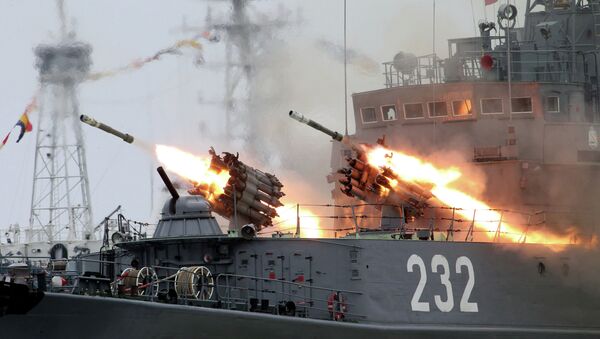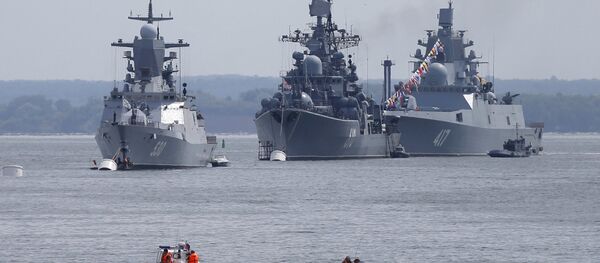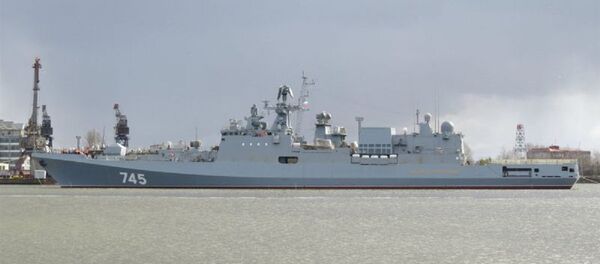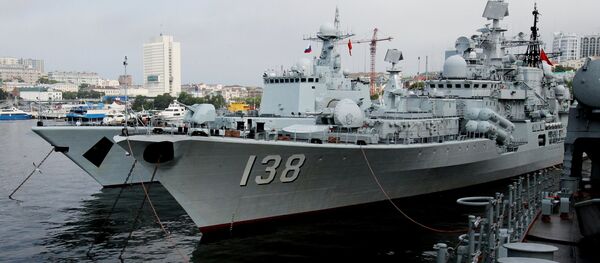Although big ships went out of style decades ago maybe it's time to bring back legendary battleships, Professor Robert Farley of the Patterson School of Diplomacy and International Commerce notes, calling attention to the fact that Russia and China have kicked off separate projects aimed at constructing large surface warships.
"For decades, naval architects have concentrated on building ships that, by the standards of the World Wars, are remarkably brittle. These ships can deal punishment at much greater ranges than their early 20th century counterparts, but they can't take a hit. Perhaps it is time to reconsider this strategy, and once again build protected ships" Professor Farley wrote in his article for the National Interest.
These warships, equipped with two heavy guns each in turrets fore and aft and protected by steel armor, displaced almost 15,000 tons. Remarkably, the world's navies willingly adopted these design features, which allowed a vessel to fight and absorb punishment effectively.
"[L]ethality and survivability increased dramatically with ship size, and the navies of the world responded accordingly. By 1915 the first line battleships of the Royal Navy would displace 27,000 tons; by 1920 the world's largest battleship (HMS Hood) displaced 45,000 tons. In 1921 international agreements would constrain warship size, although the Germans and Japanese in particularly imagined battleships of staggering proportions," the US scholar explained.
The "battleship" had caught its second wind in the 1970s: the USSR launched a project aimed at building Kirov class heavy missile cruisers. In response, the United States refurbished its four Iowa class warships, which nevertheless remained in service for only a few years.
"More recently, Russia, the United States, and China have all considered the construction of large surface warships," the American scholar underscored.
"One of the [US Navy] proposals for the CG(X) program involved a nuclear powered warship approaching 25,000 tons," he pointed out.
According to designers, Russia's new battleships will displace about 17,500 tons and carry 60 anti-ship cruise missiles, 128 anti-aircraft guided missiles and 16 anti-ship guided missiles. The warship is expected to reach a speed of 30 knots and remain at sea up to 90 days without support.
Commenting on the issue, Professor Farley underscored that big ships still have lethality and survivability advantages.
"For example, bigger ships can carry larger magazines of missiles, which they can use both for offensive and defensive purposes. Advances in gun technology (such as the 155 mm Advanced Gun System to be mounted on the Zumwalt class destroyer) mean that large naval artillery can strike farther and more accurately than ever before," he noted.
"Larger ships can generate more power, increasing not only their lethality (rail guns, sensors) but also their survivability (anti-missile lasers, defensive sensor technologies, close-defense systems)," Professor Farley emphasized, adding that modern battleships will be most likely used to fight against shore-based systems.






